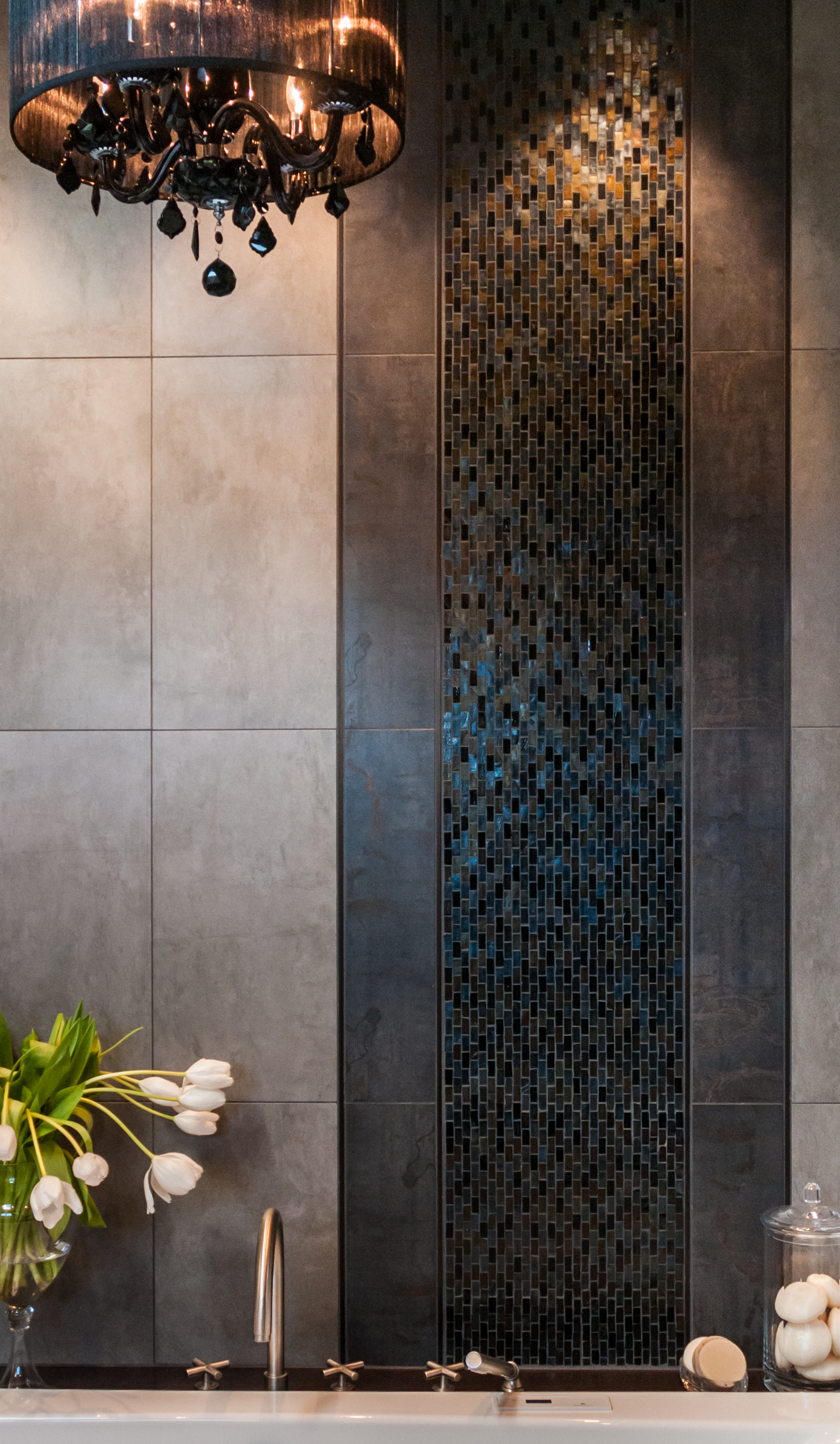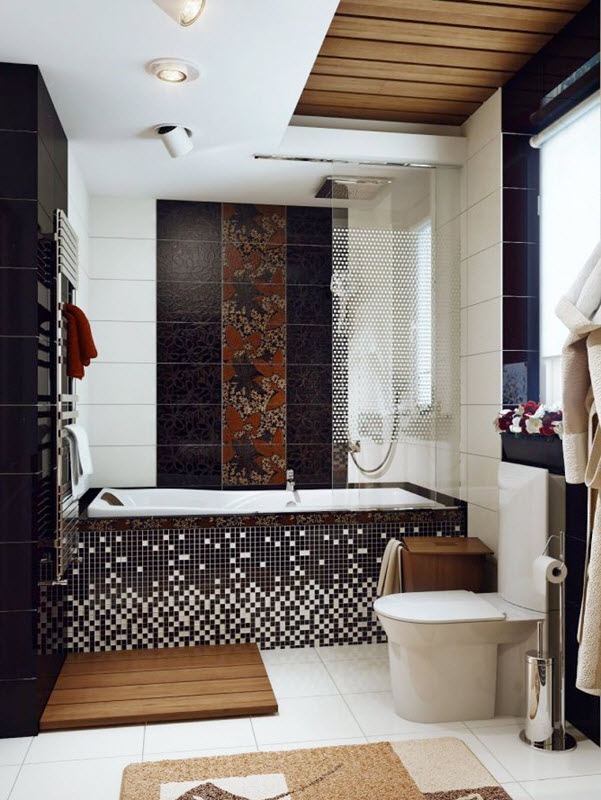


Pre-mounted sheets of 1″ ceramic mosaic tiles (in a range of geometric shapes like honeycomb, pennyround, and square) made intricate designs less time-consuming to achieve.
#MOSAIC BATHROOM TILES PLUS#
It didn’t take long, however, for improvements in the world of tile-new machinery that made manufacturing faster and easier, plus innovations in the tile-setting process-to usher in more creative decorative installations. In this fresh, germ-sensitive frontier, all-white tiles became preferred for bathroom floors because they were considered the best for spotting-and thus eliminating-dirt and microbes, and keeping a home’s inhabitants healthy. Photo: Jason King Mosaic Floor Tile Patterns Their early offerings dovetailed nicely with late Victorian-era discoveries on germ theory that would propel a desire for ultra-sanitary surfaces in kitchens and bathrooms, which made tile an ideal flooring medium.Įarly mosaic floors could be all white or feature a subtle, random pattern of dots or flowers. The Pittsburgh Encaustic Tile Company is considered the first successful American company to manufacture ceramic tile commercially in the U.S., beginning in 1876, and by 1894 dozens of companies had joined the fray. The companies soon established satellite offices, and their presence spurred on a domestic tile industry. The Philadelphia Exposition featured many exhibits of sanitary ware and decorative European floor tiles-including displays of encaustics by Herbert Minton, one of the architects of the Gothic Revival-and the buzz around them convinced their manufacturers there was a marketplace for such products in the U.S. (Another tile of the era, geometric, created intricate patterns from solid individual tiles laid in contrasting colors and shapes.)Īmerica’s tile selections would soon expand, largely thanks to the 1876 Philadelphia Centennial Exposition. As with many home fashions dating to this time, the tiles were brought to an American audience largely through Andrew Jackson Downing’s 1850 book The Architecture of Country Houses.Īn installation of geometric tiles in a restored Victorian-era bath.ĭowning recommended entry floors tiled in marble or pottery for their durability, moderate cost, and “good effect.” His book makes direct reference to encaustic tiles-which at the time would have come from England in a range of browns inlaid with blue and beige tones (and would have been expensive imports reserved for the wealthiest homeowners) examples of such early installations can still be seen on the front stoops of many upscale high Victorian homes in California. Their popularity began in England, thanks to the Gothic Revival movement, which reintroduced medieval encaustic tiles-individual tiles bearing an inlaid pattern in a contrasting color, created by the new dust-pressed method-to a receptive public. But owing to production methods that were lost or forgotten over time, ceramic floor tiles didn’t become prevalent in the United States until the Victorian era. Tracing TileĬeramic tiles have existed for thousands of years-in fact, archaeologists have unearthed numerous mosaic floors beneath the ashes at Pompeii. Take a page from history’s rich offerings of tile designs to find a perfect, and appropriate, match-up for your bathroom, no matter how understated or complex your home’s architecture. The restored bathroom in an 1894 house boasts a complex mosaic floor that resembles a richly detailed rug.ĭon’t let flooring selections derail your restoration project. Often they boast spot-on period fixtures, faucets, lights, and medicine cabinets, but are accompanied by a floor that looks as though it belongs in a 1950s science fiction movie-or worse yet, in the summer palace of an Italian baron. Unfortunately, we’ve all seen them-restored bathrooms that almost got the details right.


 0 kommentar(er)
0 kommentar(er)
